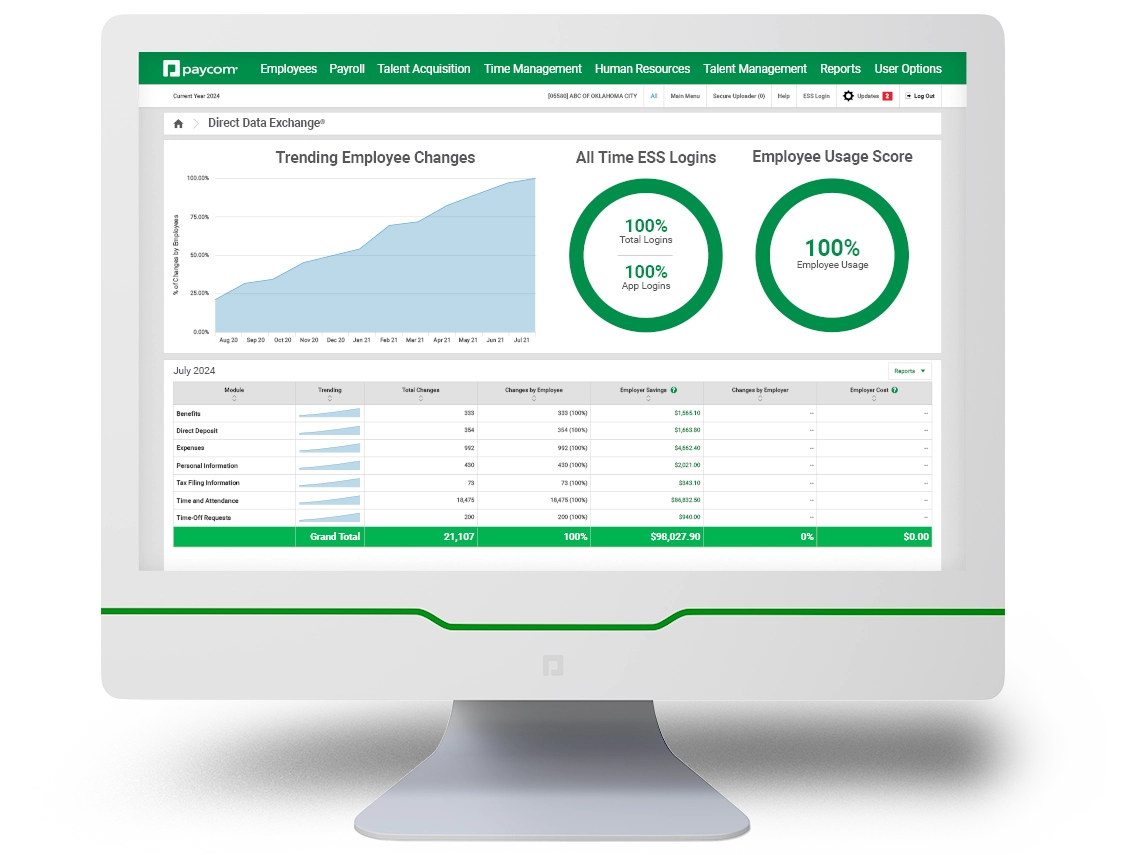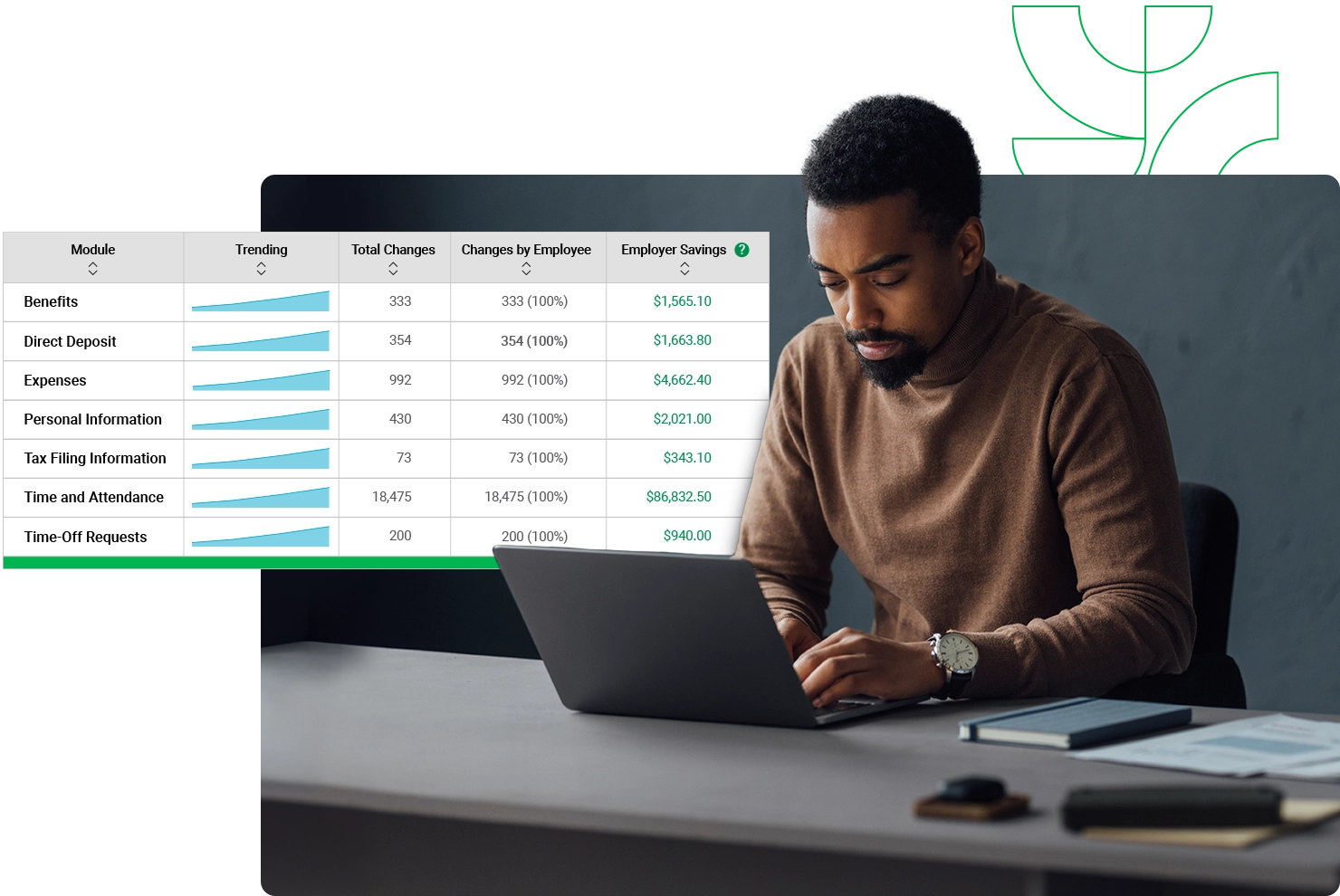Direct data exchange®
Track and measure employee tech usage to maximize your ROI

What it does
Uncover hidden savings
When 100% of your workforce uses Paycom, everyone benefits. And Direct Data Exchange proves it. Our industry-first tool takes a detailed pulse of how your employees interact with our software. Then it automatically assigns a dollar value of your savings based on Ernst & Young research. It also shows you where you could achieve additional savings to further enhance your company’s ROI.
Find untapped savings in:
- benefits
- payroll
- expenses
- personal information
- tax filing
- time and attendance
- time-off requests
- and more
Features and Benefits
Tech that proves its worth
Your HR software should do more than the bare minimum. Direct Data Exchange opens a path to higher efficiency, engagement and operations that fire on all cylinders.

Keep tabs on usage trends
Get a visual timeline of how all employees interact with their data, so you can pinpoint where and how usage trends upward.

Monitor employee access
Easily see who (and who isn't) using Employee Self-Service® — including those using our mobile app.

Run up your score
See the number of changes your workforce makes versus those made by HR to quickly learn how effectively employees manage their data.

How It Works
How Direct Data Exchange helps you score big
Automatic ROI calculations
In its breakthrough study, Ernst & Young found that the average cost of a single data entry performed by HR is $4.78. Multiply that by the number of employees and how often each task is required, and you have a good idea of the potential savings that come with self-managed data. And don't worry; Direct Data Exchange does the math for you.


A single software for a seamless flow
All employee data lives in and flows throughout our single database, requiring no data reentry and only one login and password. Along with eliminating costly redundant processes, this gives you an accurate reading of employees' usage and its bottom-line impact.
See what people are saying about Direct data exchange
Frequently asked questions
Learn more about Direct Data Exchange, performance and ROI
Paycom’s Direct Data Exchange performs ROI reporting for payroll and HR software. The tool highlights areas where tech usage can be improved for greater cost savings and company efficiencies. This also helps encourage employee usage and frees HR from unnecessary tasks.
ROI reporting HR analytics software, like Paycom’s Direct Data Exchange, provides detailed reporting on employee usage of the software, indicating where increased usage will deliver additional savings.
Direct Data Exchange tracks employee changes for time and attendance tasks, time-off requests, expenses, benefits and personal, tax and direct-deposit information.
Paycom’s Direct Data Exchange measures and displays information on the number of Employee Self-Service logins and how many changes employees have made within a certain time period. This allows organizations to see where the software already has high user adoption and where there is room for improvement.
